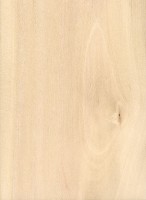 |
Common Name(s): European Hornbeam, Common Hornbeam Scientific Name: Carpinus betulus Distribution: Europe and western Asia Tree Size: 50-65 ft (15-20 m) tall, 2-3 ft (.6-1 m) trunk diameter Average Dried Weight: 46 lbs/ft3 (735 kg/m3) Specific Gravity (Basic, 12% MC): .53, .74 Janka Hardness: 1,630 lbf (7,260 N) Modulus of Rupture: 16,010 lbf/in2 (110.4 MPa) Elastic Modulus: 1,755,000 lbf/in2 (12.10 GPa) Crushing Strength: 7,320 lbf/in2 (50.5 MPa) Shrinkage: Radial: 6.8%, Tangential: 11.5%, Volumetric: 18.4%, T/R Ratio: 1.7 |
Color/Appearance: Hornbeam’s sapwood is very thick, with most boards and lumber being comprised entirely of sapwood. Color is nearly white. Pale yellowish brown heartwood isn’t clearly demarcated from sapwood.
Grain/Texture: Grain is straight to slightly interlocked, with a fine, even texture.
Endgrain: Diffuse-porous; small to medium pores, often in radial or diagonal arrangement, (sometimes in dendritic arrangement), moderately numerous to numerous; commonly in radial multiples of 2-4; tyloses occasionally present; smaller rays not visible without lens, with much larger aggregate rays occasionally present, close spacing; parenchyma diffuse-in-aggregates, banded (marginal).
Rot Resistance: Hornbeam is rated as non-durable to perishable in regards to decay resistance, and is also susceptible to insect attack. However, Hornbeam has excellent resistance to wear and abrasion.
Workability: Overall, Hornbeam is considered difficult to work on account of its density and toughness. However, this same density, coupled with its fine and even grain, make an excellent turning wood. Stains, glues, and finishes well.
Odor: No characteristic odor.
Allergies/Toxicity: Although severe reactions are quite uncommon, Hornbeam has been reported to cause skin irritation. See the articles Wood Allergies and Toxicity and Wood Dust Safety for more information.
Pricing/Availability: Prices for the wood should be moderate throughout its natural range. Not commonly exported to the United States.
Sustainability: This wood species is not listed in the CITES Appendices or on the IUCN Red List of Threatened Species.
Common Uses: Fuelwood, flooring, veneer, musical instruments (percussion), wheels, handles, shafts, turned objects, and other small wood parts.
Comments: So named, either 1) because one of its original uses was as an ox yoke, or 2) the wood was reputed to be as hard and tough as a horn.
None available.
Scans/Pictures: A special thanks to Steve Earis for providing the wood sample and turned photo of this wood species.


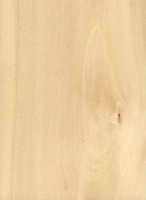
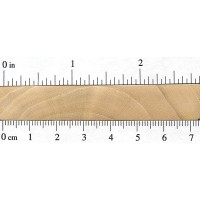
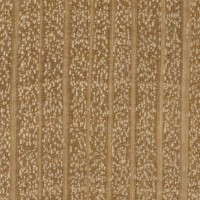
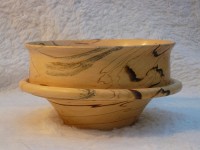



What type of wood would have similar characteristics to hornbeam but perhaps would be easier to get hold of (in Europe)? I am renovating a watermill and have been told it has to be hornbeam or cormier (Sorbus domestica) both of which are proving difficult to find/prohibitively expensive. I need it for the teeth on cogwheels, it has to be durable, shapable, resistant to water/rotting and liable to sheer if the mechanism jams. As we are not running the mill as it would been, the durability is less of an issue – maybe run it for a few hours a… Read more »
I read once that cherry was used for watermill teeth. Apple has also been used traditionally. But I would have thought the main problem would be finding a wood that’s fine grained, hard and not too brittle, but that also remains durable in a wet environment. Hornbeam and sorbus are mechanically perfect but very susceptible to rot. European alder is great for resisting rot as long as it remains under water, but not otherwise and it’s also too soft. Elm was traditionally used for underwater structures such as lock gates on English canals; so I’m not too sure why it’s… Read more »
Not sure why you should find hornbeam difficult to source if you are in the UK; it’s ubiquitous across the landscape and is not highly prized (goes to firewood mostly) so should be cheap as chips. However, you might consider investigating Robinia Pseudocaccia (Black Locust): grown for timber all over France and lots of UK importers currently.
European Hornbeam does not finish well. Much of the polyUrathane sunk into my EH chess pieces.
then don’t use polyurethane, hornbeam oils up spectacularly well with a bit of danish. see my facebook page for a set or skittles i made in hornbeam. https://www.facebook.com/steveswoodenskittles/?ref=hl